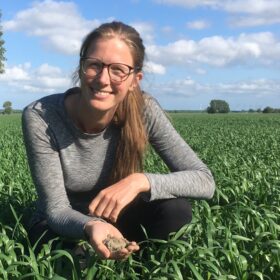Expertin
Dr. Dunja Lamatsch
Expertin
Expertise
- Biologie, Botanik, Zoologie: Sexual reproduction is widespread throughout the animal and plant kingdoms, but undercertain conditions remain costly compared to asexual reproduction. Sex creates a wide variety of genotypes on which natural selection can act, but it also breaks up favourable gene combinations. Asexuals have the ability to preserve their genome and to propagate genotypes that have a previous history of success. In addition, asexuals can reproduce twice as fast as sexuals, because all, rather than half, of their offspring are themselves capable of reproduction. Although asexual reproduction offers several clear short-term advantages, ruling evolutionary theory dictates that the absence of a mechanism for rapid genetic change will direct clones persisting over long time frames into evolutionary dead ends. Several animal and plant groups nevertheless show a large incidence of asexual reproduction and some lineages might have been fully asexual for many millions of years.
- Gender Mainstreaming
Schlagworte
- Genom(größen)-Evolution
- Polyploidy
- Evolution asexueller Organismen
Verfügbar für
Gender-Trainings
Interviews
Jury
Kooperationen
Mentoring
Projektleitung
Projektmitarbeit
Vortragstätigkeiten
Beruflich
Mittleres Management
Tätigkeitsbereiche:- Universität
Ausbildung
Universität
Biologie, Botanik, Zoologie
Zusatzausbildung(en)
Evolution
Weitere Fachrichtungen, weitere Ausbildungen
Biochemie, (Human)Genetik
Sprachen
Mehr Details
Referenzen
Publikationen

Dr. Dunja Lamatsch
Kontakt
- +43 512 507 50 204
- dunja.lamatsch@uibk.ac.at
- https://www.youtube.com/watch?v=GgbaYj1Kw2U&list=PL5eolwFmTdvghdbKMY4ZXWzHB0rSsmQS4
- https://www.uibk.ac.at/limno/personnel/lamatsch/
Letzte Aktualisierung: 12.05.2021



















